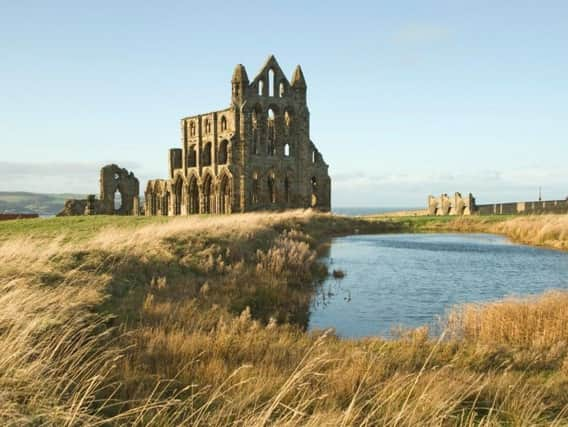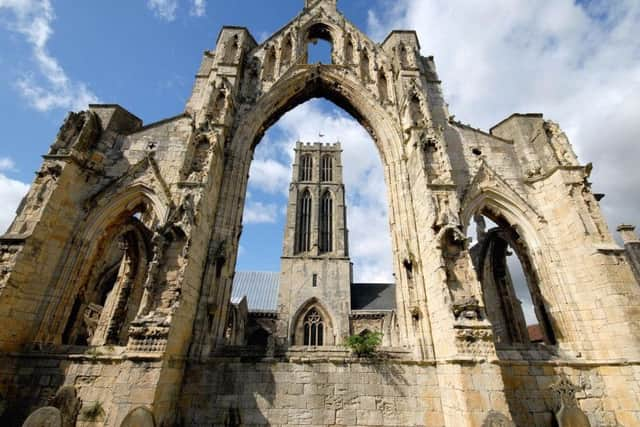10 of Yorkshire's most magnificent Heritage sites
This article contains affiliate links. We may earn a small commission on items purchased through this article, but that does not affect our editorial judgement.


Established in 1982, this day encourages everyone to celebrate culture around the globe and aims to bring awareness to important cultural monuments and sites, stressing the importance of preserving these historic places.
The UK has hundreds of important heritage sites, ranging from ruins, to monuments to stately homes, and Yorkshire in particular has an array of heritage sites which date back to hundreds, if not thousands, of years ago.
Scarborough Castle, North Yorkshire


Advertisement
Hide AdAdvertisement
Hide AdSituated on a rocky headland looking out over both Scarborough and the North Sea, Scarborough Castle is a former medieval Royal fortress, located in North Yorkshire.
This castle has over 3,000 years of history and offers visitors an insight into the past, along with providing stunning panoramic views.
Whitby Abbey, North Yorkshire


Whitby Abbey has a rich historical past, as it was a 7th-century Christian monastery, before it later became a Benedictine abbey. However, the abbey and its possessions were then confiscated by the crown during the Dissolution of the Monasteries under Henry VIII.
The abbey is perched high on a cliff and it’s gothic remains are just a short climb away from the seaside town of Whitby.
Advertisement
Hide AdAdvertisement
Hide AdWhitby and its abbey were also an inspiration for Bram Stoker’s classic gothic novel, Dracula, as the abbey and its history provided a perfect setting for parts of this gothic vampire tale.
Rievaulx Abbey, North Yorkshire
Rievaulx Abbey was a Cistercian abbey located in Rievaulx, near Helmsley, in the North York Moors National Park. This abbey has an impressive history as it was once one of England's most powerful Cistercian monasteries.
You can still visit the extensive ruins of this abbey and learn about its rich past, including information regarding the lives of the monks who inhabited this abbey for many years.
Kirkstall Abbey, West Yorkshire
Founded in 1152, Kirkstall Abbey is a ruined Cistercian monastery, located in the Kirkstall area of north-west Leeds, West Yorkshire.
Advertisement
Hide AdAdvertisement
Hide AdThis abbey is set in a public park on the north bank of the River Aire amongst an abundance of wildlife and greenery and you can still visit and find out all about what life was like for the Cistercian monks who lived there for nearly 400 years.
This abbey is now an iconic Leeds landmark and is the focus of the annual running competition, named ‘Leeds Abbey Dash’.
Nostell Priory, West Yorkshire
Nostell Priory is an 18th-century palladian house with landscape park and gardens, located close to Wakefield, West Yorkshire.
At its time, this house was an architectural masterpiece, built in 1733 for the Winn family on the site of a medieval priory.
Advertisement
Hide AdAdvertisement
Hide AdThe Priory and its contents were then given to the National Trust in 1953 by the trustees of the estate and Rowland Winn, 3rd Baron St Oswald, and National Trust continue to look after this site to the present day.
Abbeydale Industrial Hamlet, South Yorkshire
Located in the south of the city of Sheffield, West Yorkshire, Abbeydale Industrial Hamlet is now an industrial museum, which forms part of a former steel-working site situated on the River Sheaf.
This industrial heritage site has a rich history which dates back to the 13th century and is made up of a number of dwellings and workshops that were formerly the Abbeydale Works.
This site is a scheduled ancient monument and the works themselves are Grade I listed, with the workers' cottages, counting house, and manager's house all being Grade II* listed.
Monk Bretton Priory, South Yorkshire
Advertisement
Hide AdAdvertisement
Hide AdLocated in the village of Lundwood, close to Monk Bretton, this heritage site is a ruined medieval priory in South Yorkshire.
This priory was founded in 1154 by a local landowner and was a daughter house of the rich Cluniac priory at Pontefract, but after many years of bitter quarrels between the two houses Monk Bretton seceded from the Cluniac Order and became a Benedictine house in 1281.
When first built this monastery was situated in a peaceful and remote location in the wooded valley of the River Dearne, but it is now surrounded by housing estates and industrial developments, showing a stark yet intriguing contrast between old and new.
Conisbrough Castle, South Yorkshire
Taking its name from the Anglo-Saxon word ‘Cyningesburh’, meaning ‘the king’s borough’, Conisbrough Castle is a medieval fortification located in the South Yorkshire town of Conisbrough.
Advertisement
Hide AdAdvertisement
Hide AdThis castle was built in the 11th century by William de Warenne, the then Earl of Surrey, after the Norman conquest of England in 1066.
Although very little is known of the site before the Norman Conquest, the town of Conisbrough has a rich historical past, with its church of St Peter dating back as early as the 8th century, and now being the oldest standing building in South Yorkshire
Burton Constable Hall, East Yorkshire
Located in the Skirlaugh area of Hull, East Yorkshire, Burton Constable Hall is a large Elizabethan country house. It features 18th and 19th century interiors and a splendid 18th century ‘Cabinet of Curiosities’.
You can still visit this historic house and explore its grounds with their woodland and parkland walks. You can also explore the house itself, visiting the grand rooms filled with luxurious art and furniture, finding out more about the members of the Constable family from the past 500 years.
Howden Minster, East Yorkshire
Advertisement
Hide AdAdvertisement
Hide AdDating back to 1267, Howden Minster is a Grade I listed Church of England church belonging to the Diocese of York.
Situated in the town of Howden in the East Riding of Yorkshire, this minster is one of the largest and spectacularly looking churches in the East Riding of Yorkshire.
Although you can usually only see this heritage site from the outside only now, if you peek through the gate you can still see the ruined choir of the church, which was later used as a graveyard, and see the magnificent structure as a whole.